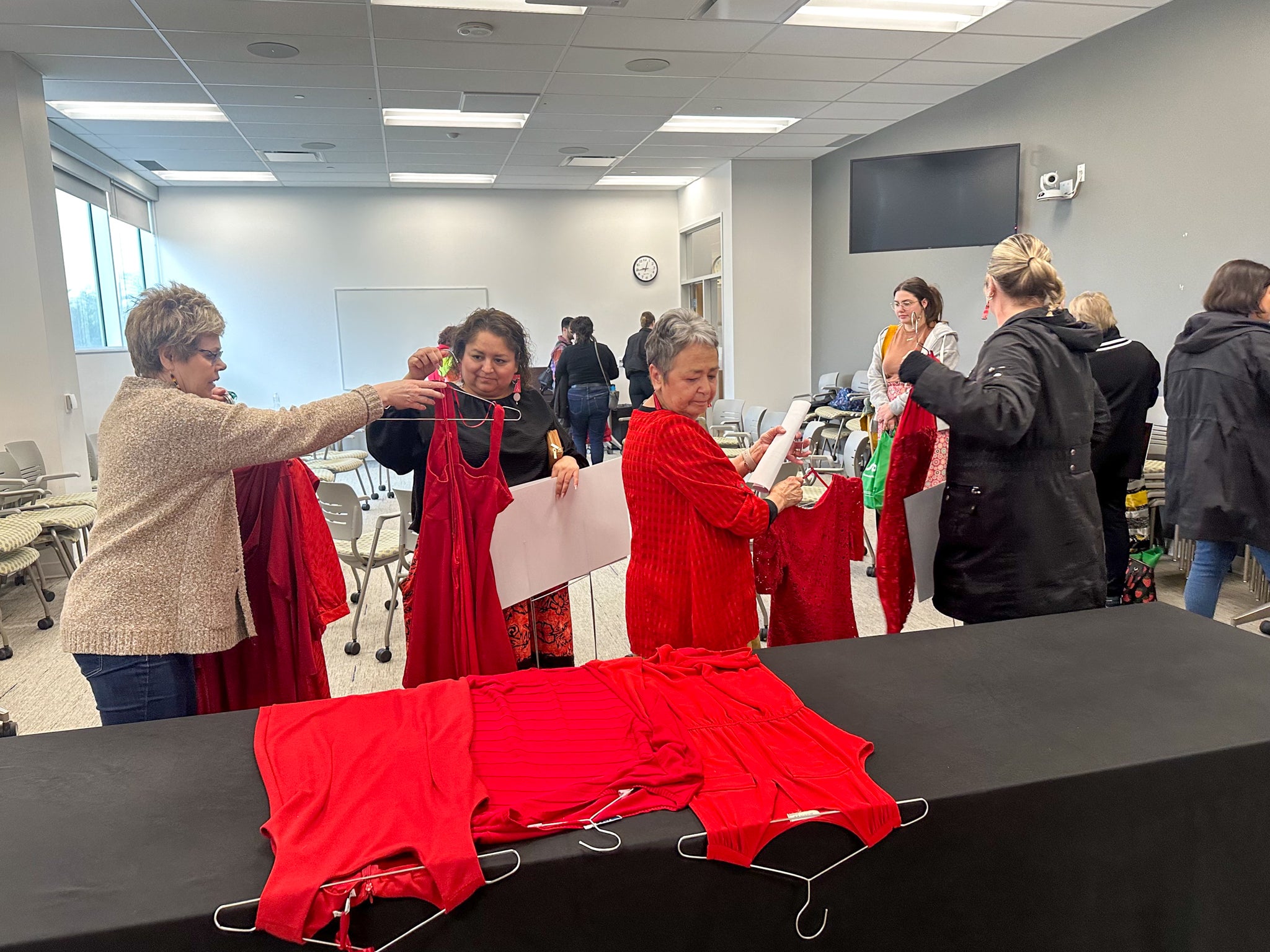
Calling for action on National Day for Awareness of MMIWG2S
Humanizing the staggering statistics of missing and murdered Indigenous women, girls and Two-Spirit people in Canada

Humanizing the staggering statistics of missing and murdered Indigenous women, girls and Two-Spirit people in Canada
By Emily Brant Office of Indigenous RelationsOn May 3, the University of Waterloo community came together to observe the National Day of Awareness for Missing and Murdered Indigenous Women and Girls and Two-Spirit People (MMIWG2S), which is annually observed on May 5, and is also known as Red Dress Day.
In 2010, Indigenous artist Jaime Black conceived the REDress project, an impactful art installation featuring empty red dresses symbolizing the missing and murdered Indigenous women, girls and Two-Spirit People. Since its inception, these red dresses have evolved into a powerful emblem representing strength and honor for Indigenous women who have bravely shared their stories, and for families who have suffered losses. The establishment of Red Dress Day serves as a poignant call to action, demanding attention and justice for the persistent crisis of gender-based and racialized violence that stems from the enduring impacts of colonialism.

The commemoration ceremony was led by Indigenous Knowledge Keeper, Elder Myeengun Henry, inside the Health Expansion Building. Members of the Waterloo community were invited to hang red dresses around the building to represent and honour the lives of the missing and murdered, while showing solidarity with their family and loved ones. When the weather dries up, the dresses will be hung outdoors in the trees that line the path to what will soon be the Indigenous Outdoor Gathering Space.
“They tell us from our ancestors, that we have to have these moments of reflection so we don’t forget about the beauty of this world, but we can’t forget about the pain that’s been inflicted either. Especially one group that lives in this country who has repeatedly over and over had to go through the devastation of loss, and in most cases, without any resolve,” Elder Henry said. “How can I look at my daughter and say that your chance of dying by violence is greater than anybody else in this country?”

Jean Becker and Robin Jones pick up red dresses to hang around the building.
Jean Becker, associate vice-president for the Office of Indigenous Relations, was also on site to offer a few words.
“The statistics are staggering, and behind each number is a human. Behind each number is a story of a person whose life was tragically cut short or whose whereabouts remain unknown,” Becker said. “Indigenous women, girls, and Two-Spirit people are disproportionately affected by violence, with rates far exceeding those of other demographics … these people are not just statistics; they are our sisters, daughters, mothers, cousins, aunties, caretakers and friends.”
Here are a few of those staggering statistics. According to the Assembly of First Nations Indigenous women make up 16 per cent of all female homicide victims and 11 per cent of missing women in Canada, despite making up less than five per cent of the population. A little more than 13 per cent of Indigenous people experience violence from their current or ex-partner, a proportion that is twice as high as non-Indigenous people (5.7 per cent). And 56 per cent of Indigenous women have suffered physical assault, and 46 per cent have experienced sexual assault. By comparison, about one-third of non-Indigenous women have suffered these assaults in their lifetimes.

Elder Myeengun Henry, Jean Becker and other members of the Indigenous community gather for the smudging ceremony.
This is an emotional day that can be difficult for many people. If you’re struggling or need someone to talk to, please reach out for support. Here are some resources:
Support Services
Indian Residential School Society Crisis Line (24-hour)
Toll-Free Phone: 1-800-721-0066
(Languages supported: Inuktitut, Cree, Ojibway, English, French)
Talk 4 Healing (for Indigenous women in Ontario)
EmpowerMe : 1-833-628-5589 (24/7 line)
Education

The University of Waterloo recently broke ground for the new space, scheduled for completion by this fall.
Read more
Construction begins on Indigenous outdoor gathering space at University of Waterloo

Read more
Here are the people and events behind some of this year’s most compelling Waterloo stories

Read more
A closer look at the University of Waterloo’s beloved network of pedestrian tunnels and bridges
The University of Waterloo acknowledges that much of our work takes place on the traditional territory of the Neutral, Anishinaabeg, and Haudenosaunee peoples. Our main campus is situated on the Haldimand Tract, the land granted to the Six Nations that includes six miles on each side of the Grand River. Our active work toward reconciliation takes place across our campuses through research, learning, teaching, and community building, and is co-ordinated within the Office of Indigenous Relations.